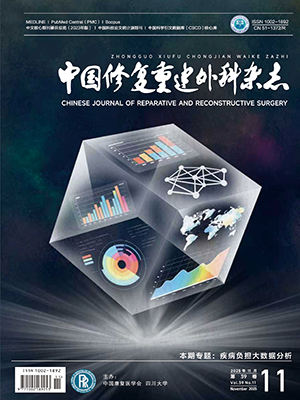The experiment performed on domestic pig, was designed to investigate the architecture of the stretching skin and the effect of tension traction on the wound closure. An 7 cm x 3.5 cm was drawn at a standard position. Drawing horizontal and vertical lines on the traction area, points of 1 cm apart were tattooed on the lines. A traction force measuring device was used to draw the wound edges together. Measurements of the distances between the points were made. An 7 cm x 10 cm wound was made on identical sites of each hind leg. In the experiment the traction tension was applied on the edges of wound immediately after the wound debridement. The results showed the stretched distance in the two areas was 5-7 times the width of the wound. The gain of skin from traction was 61-89 percent in the width of the wound. The wounds from traction five days could be closed 5 days after traction. It was concluded that the skin which could be used for traction was abundant. Wound closure with the skin traction technique had many advantages, such as rapid decreasing the size of wound and early closing of wound.
Citation: Zhou Li an,Guo Shuzhong,Li Zun et al.. EXPERIMENTAL STUDY OF THE ARCHITECTURE OF SKIN FOLLOWING TENSION TRACTION AND WOUND CLOSURE. Chinese Journal of Reparative and Reconstructive Surgery, 1998, 12(4): 193-196. doi: Copy
Copyright © the editorial department of Chinese Journal of Reparative and Reconstructive Surgery of West China Medical Publisher. All rights reserved




